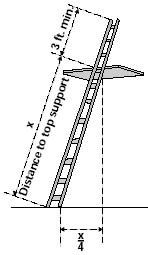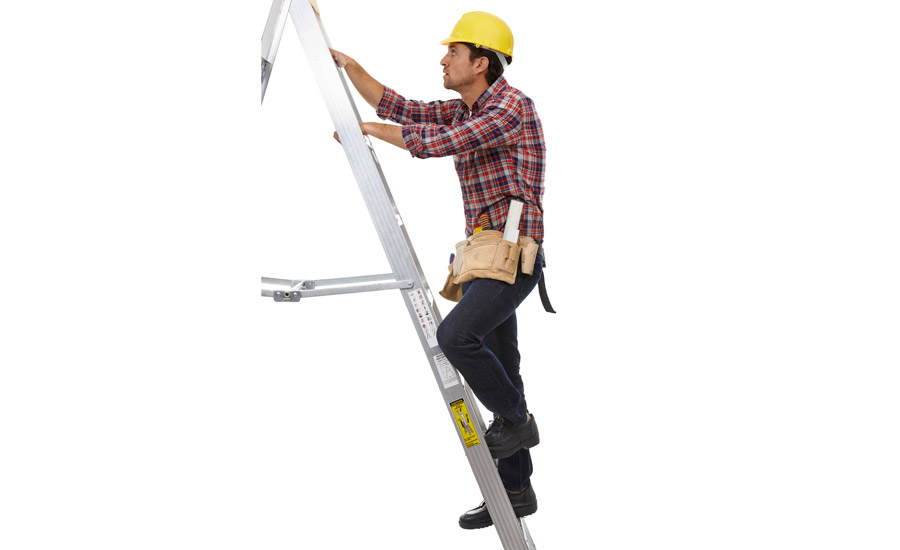Falls from portable ladders (step, straight, combination, and extension) are one of the leading causes of occupational injuries and fatalities. The following are some quick tips from the Occupational Safety and Health Administration (OSHA) on ladder safety.
• Read and follow all labels/markings on the ladder.
• Avoid electrical hazards — look for overhead power lines before handling a ladder. Avoid using a metal ladder near power lines or exposed energized electrical equipment.
• Always inspect the ladder prior to using it. If the ladder is damaged, it must be removed from service and tagged until repaired or discarded.
 • Always maintain a three-point (two hands and a foot, or two feet and a hand) contact on the ladder when climbing. Keep your body near the middle of the step and always face the ladder while climbing (see diagram at right).
• Always maintain a three-point (two hands and a foot, or two feet and a hand) contact on the ladder when climbing. Keep your body near the middle of the step and always face the ladder while climbing (see diagram at right).
• Only use ladders and appropriate accessories (ladder levelers, jacks or hooks) for their designed purposes.
• Ladders must be free of any slippery material on the rungs, steps, or feet.
• Do not use a self-supporting ladder (e.g., step ladder) as a single ladder or in a partially closed position.
• Do not use the top step/rung of a ladder as a step/rung unless it was designed for that purpose.
• Use a ladder only on a stable and level surface, unless it has been secured (top or bottom) to prevent displacement.
• Do not place a ladder on boxes, barrels, or other unstable bases to obtain additional height.
• Do not move or shift a ladder while a person or equipment is on the ladder.
 • An extension or straight ladder used to access an elevated surface must extend at least three feet above the point of support (see diagram at right). Do not stand on the three top rungs of a straight, single, or extension ladder.
• An extension or straight ladder used to access an elevated surface must extend at least three feet above the point of support (see diagram at right). Do not stand on the three top rungs of a straight, single, or extension ladder.
• The proper angle for setting up a ladder is to place its base a quarter of the working length of the ladder from the wall or other vertical surface (see diagram at right).
• A ladder placed in any location where it can be displaced by other work activities must be secured to prevent displacement or a barricade must be erected to keep traffic away from the ladder.
• Be sure that all locks on an extension ladder are properly engaged.
• Do not exceed the maximum load rating of a ladder. Be aware of the ladder’s load rating and of the weight it is supporting, including the weight of any tools or equipment.
For more information, visit www.osha.gov.
Publication date: 7/20/2015
Want more HVAC industry news and information? Join The NEWS on Facebook, Twitter, and LinkedIn today!


Report Abusive Comment